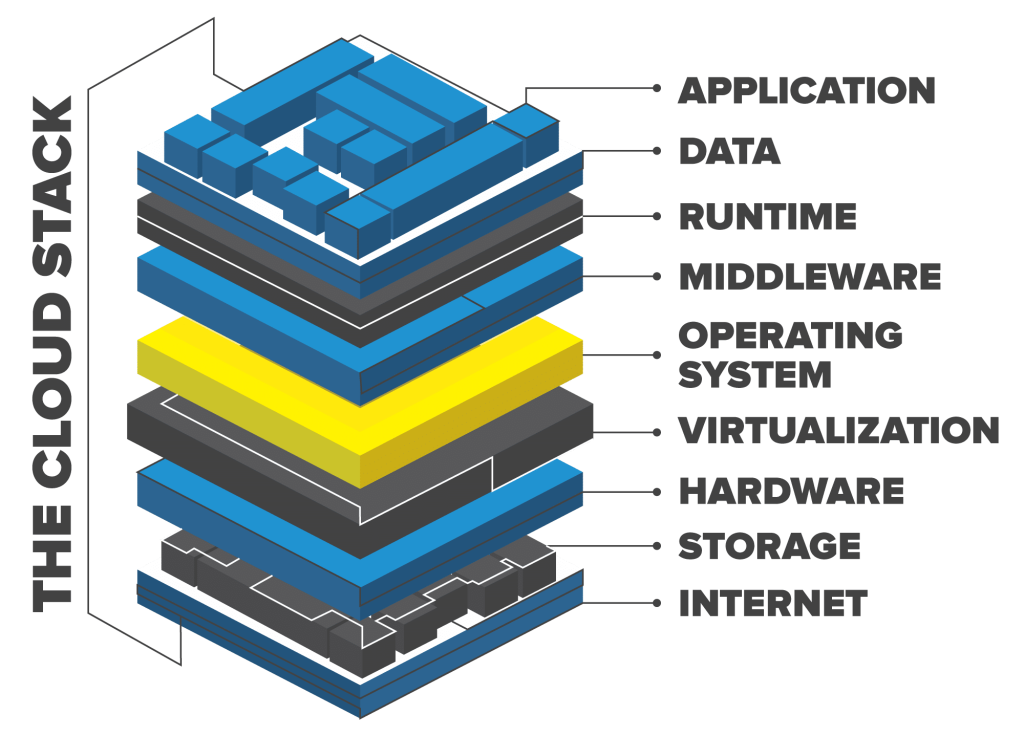It can be difficult to understand the power of cloud computing. The transformational impact it can have on a business is staggering. There are different types of clouds. There are differences between the Public Cloud, the Private Cloud, and Hybrid Clouds.
Before we describe each one of these cloud types, let’s look at the components that make up cloud computing.
The fact that technology grows at a multiplying rate is due to cloud computing. The “cloud” refers to software and services that run on the Internet instead of your computer’s hard drive.
Netflix is an example of a service that runs on the Internet. Microsoft 365 is another one. There are many great things about cloud computing. The best single benefit of the cloud is accessibility. All your applications and all your stuff are accessible from any computer, smartphone, or tablet anywhere. All you need is an Internet connection.
Cloud Computing is a Powerful Game Changer
The Cloud is a vast array of servers spread all over the world. Adobe, and SalesForce are both examples of companies offering ways to utilize cloud technology. Think of the cloud as a giant utility in the sky. Because these apps are stored on the cloud, providers can update them whenever they like. The end-user can use the updated version instantly.
Most people know something about the computer “cloud.” This article will explore the basic elements of the Public, Private, and Hybrid Clouds. What makes them different from each other? Which cloud type meets certain business needs and objectives.
Every cloud has a collection of some basic technologies. They include an operating system, virtualization software, management and automation tools, and application programming interfaces.
These technologies are the ingredients. By themselves, they do not form a cloud. They have to be brought together in a certain way. Then they become the most sought after IT infrastructure since virtualization.
In the standard IT model, the enterprise manages and controls the network connections to the private or public Internet. A full system includes the Internet, the storage layer, hardware, the Virtualization layer, the operating system, middleware, runtime, data, and the application itself.

Infrastructure as a Service (IaaS) means a company only manages the operating system level up to the application layer.
The cloud is a data center, or a collection of data centers, made up of compute and storage resources connected by a network. The data centers become a cloud when all those resources virtualize onto one big pool of assets. These resources can be intelligently and automatically orchestrated. That means it can adapt to meet the ever-changing needs of your apps. The cloud can also adapt to the ever-changing use and availability of each resource.
Applications can be provisioned more quickly without custom provisioning boxes. Once deployed over the cloud, those apps, no matter how power-hungry they may be, can be dynamically scaled on demand. Resources used, like congestion or failure, can be resolved automatically. Clouds can be more efficient and cost-effective than traditional data centers. Data is more secure on the cloud as well.
In Platform as a Service (PaaS), the enterprise only manages the data and the application layer. The Platform as a Service provider takes care of everything else. Software as a Service (SaaS) Provider handles the whole bundle completely. It’s a one-stop-shop. We’re focusing on Infrastructure as a Service (IaaS) provided as either a Public or Private Cloud. What’s the difference between these two cloud types?
Types of Cloud
Let’s take a look at each type of cloud. As we go through each one, ask yourself, which cloud type would best serve your needs.
Public Cloud
First up is the Public Cloud. This is the type of cloud that most people think of when they talk about “the cloud.” They are public because they’re hosted by a cloud service provider. These cloud service providers rent space on the cloud to many customers. Like tenants renting apartments. Those tenants usually only pay for services they actually use.
Public clouds let customers off-load management to someone else. This is great for people who don’t mind giving up some control. Public Clouds are popular for hosting everyday apps like email, CRMs, and other business support apps.
The Public Cloud provider offers choices. Enterprises get to choose which operating system they prefer. Do you want Linux or Windows? The Public Cloud is cheaper than the Private Cloud.
Private Cloud
Private Clouds are next. They are “private” because they only have one tenant. That one tenant gets all the benefits of being on the cloud. The tenant also has the advantage of controlling and customizing the Private Cloud to fit their needs. Many companies migrate IT systems to Private Clouds for this very reason. The organization can run core business apps that provide unique competitive advantages like research, manufacturing, supply chain management, proprietary designs, and more.
Private Clouds offer privacy settings and management responsibilities. Resources are dedicated to a single customer with isolated access. On-site and vendor-owned infrastructures can power Private Clouds.
There are 2 subtypes of Private Clouds: Managed Private Clouds and Dedicated Clouds
Managed Private Clouds enable customers to create and use a Private Cloud. A third party vendor deploys, configures, and manages the Private Cloud. This is a cloud delivery option that helps understaffed enterprises provide better Private Cloud services. It also has a tighter infrastructure.
Dedicated Clouds are a special kind of Private Cloud. They exist within another cloud. For example, a corporation might have an accounting department with its own dedicated cloud within the organization’s Private Cloud.
Hybrid Cloud
Finally, there are Hybrid Cloud environments. They are called “hybrid” because they combine both the Public and Private Clouds. A Hybrid Cloud combines 2 or more interconnected cloud environments, public or private.

The Hybrid Cloud’s pooled virtual resources are developed from hardware by a third-party company and from hardware owned by the user. On-premise IT infrastructure, traditional virtualization, bare-metal servers, and containers can be incorporated. But it must be alongside the Public and Private Clouds. Without at least 1 of each cloud type, it’s considered a hybrid environment and not a Hybrid Cloud.
The Hybrid Cloud offers the best of the Public and Private Clouds and then some. The Hybrid environment is great for developing new innovative apps with uncertain demand. These apps deploy to your Private Cloud. The apps extend to the Public Cloud when demand spikes.
Remember: there are several types of clouds to consider. Look at the benefits of each before moving an IT system to the cloud. Cloud migration can be complex. Get advice. A trusted professional can assess the situation against your objectives. They will develop a strategy best suited for your specific service delivery needs.


